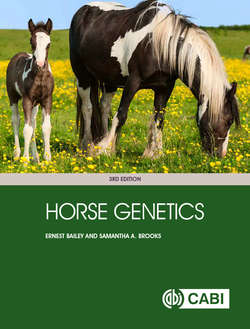Читать книгу Horse Genetics - Ernest Bailey - Страница 76
На сайте Литреса книга снята с продажи.
Expected ratios, statistical tests and alternative models
ОглавлениеLearning to predict and recognize simple 1:1, 1:2:1, 3:1, and 2:1 trait ratios among offspring is extremely useful for building genetic models of trait transmission. These ratios may be complicated, as we have seen, by the interactions of more than one gene, and may not be obvious unless large numbers of offspring are available. Statistical testing (e.g. the chi-square test) may be needed to determine whether the observed ratios match the expected ratios. (Consult a basic genetics or statistics text for information on how to apply such tests.)
If the data obtained do not match expected ratios, then alternative proposals need to be considered, such as:
1. The trait is genetic, but the hypothesized transmission mechanism is incorrect (e.g. more than one gene may be involved).
2. The trait is produced by environmental influences, not genes.
3. The gene shows “reduced penetrance” (i.e. the phenotype is modified by environment or other gene combinations, so that the effect of the mutant gene is not easily recognized).
